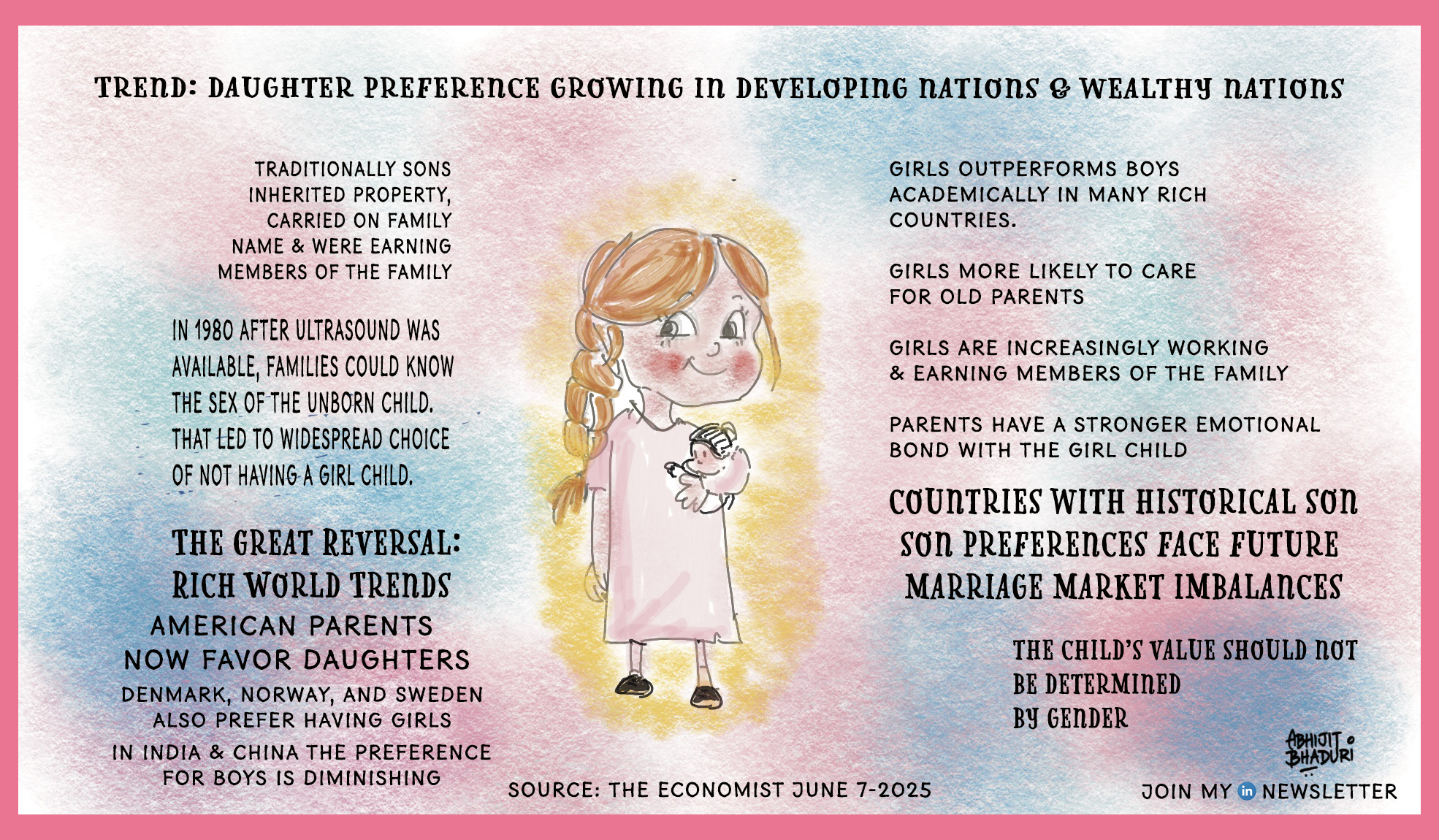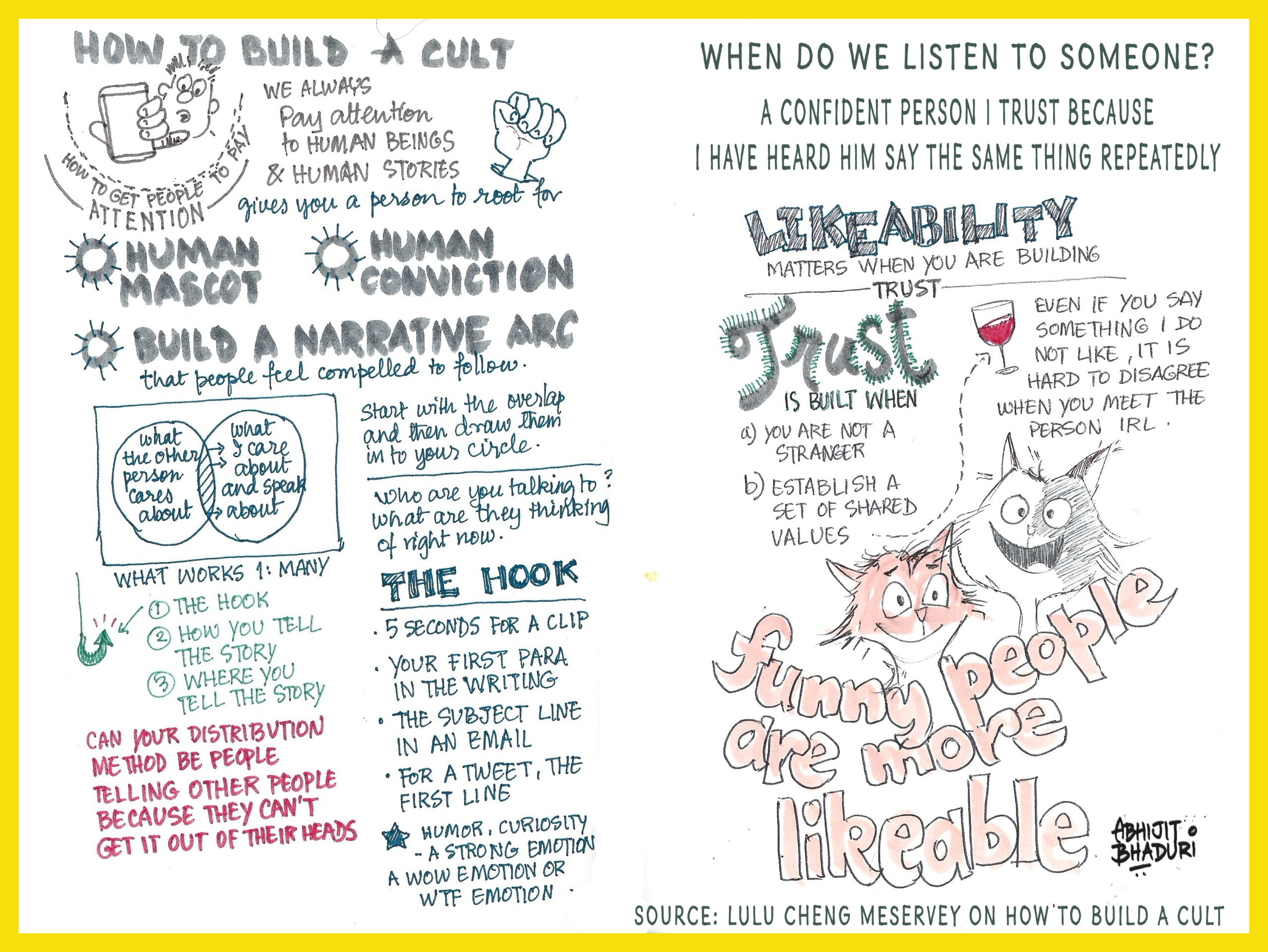
Something extraordinary is going to happen in boardrooms across America, and most executives don’t even realize it. While headlines focus on AI and remote work, a silent demographic revolution is fundamentally altering who shows up to work, how they think about careers, and what they need from employers. There is growing trend that will shape the talent pool. It is a complete flip in what parents want when they’re hoping for a baby.
For centuries, families worldwide prayed for sons. In many cultures, boys meant financial security, family legacy, and care in old age. But today, American parents are more likely to keep trying for a baby if they only have sons—they want daughters. This isn’t just a cultural curiosity; it’s a workforce earthquake waiting to happen.
When Daughters Become the Favorite
When a former colleague announced her third pregnancy, her mother-in-law asked if she was hoping for a boy to “complete the family.” My colleague laughed, “Mom, we’re hoping for another girl. My daughters are going to take better care of us when we’re old, and honestly, they’re just easier to connect with.” This sentiment, once unthinkable, is now commonplace in wealthy nations.
The numbers tell the story. Girls consistently outperform boys in school, are more likely to attend college, and increasingly dominate professional programs. Meanwhile, parents observe that their daughters call more often, remember birthdays, and coordinate family gatherings. The result? A generation of parents who see daughters as both emotionally closer and economically smarter investments.
But here’s where it gets interesting for employers: this preference shift is creating a workforce that operates by completely different rules than the one currently running most companies.
The Caregiving Collision
While previous generations of women might have left the workforce entirely, today’s professional women are trying to balance peak career years with intensive eldercare responsibilities. They’re negotiating with nursing homes during lunch breaks, attending parent-teacher conferences and geriatric care meetings in the same week, and making career decisions based on proximity to aging parents. Bhavana Issar who started Caregiver Saathi says, “81% of caregivers are women.”
“81% of caregivers are women”
Companies still operating under old assumptions—that ambitious employees will relocate anywhere, work late without notice, or prioritize career over family—are about to lose their best talent.

The New Workplace Reality
Smart organizations are already adapting. Microsoft now offers eldercare resources alongside childcare benefits. Some consulting firms have created “caregiving career tracks” that allow high performers to maintain demanding roles while managing family responsibilities. Others are experimenting with “season-based” careers, where employees can dial intensity up or down based on life circumstances.
The most forward-thinking companies are recognizing that the traits that make someone a good eldercare coordinator—patience, emotional intelligence, complex problem-solving under pressure—are exactly the skills needed for modern leadership.
Beyond the Pink and Blue
This demographic shift extends far beyond American offices. In China, where son preference once drove families to extreme measures, young parents increasingly value daughters’ emotional intelligence and academic achievement. Indian families are celebrating daughters’ career success in ways that would have been unimaginable a generation ago.
For global companies, this means rethinking everything from recruitment strategies to leadership development programs. The executives of tomorrow will likely be more emotionally intelligent, more collaborative, and more skilled at managing complex family dynamics—qualities that happen to align perfectly with what modern organizations need.
The Bottom Line
The demographic revolution isn’t coming—it’s here. The children born during the height of daughter preference are now entering the workforce, bringing different expectations, capabilities, and life patterns. Companies that recognize this shift early will secure competitive advantages in talent attraction and retention. Those that don’t will find themselves struggling to understand why their best employees keep leaving for “better work-life balance”—not realizing that the definition of balance itself has fundamentally changed.
The future of work isn’t just about technology or remote policies. It’s about understanding that the humans showing up to work tomorrow were raised by parents who saw them as the answer to their prayers—and who expect the workplace to honor that same value.
What do you think is the biggest shift in the talent pool with more QUALIFIED women entering the workforce.
I spoke to Bhavana Issar about the sensitivity in corporates to Caregivers.




Leave a Reply